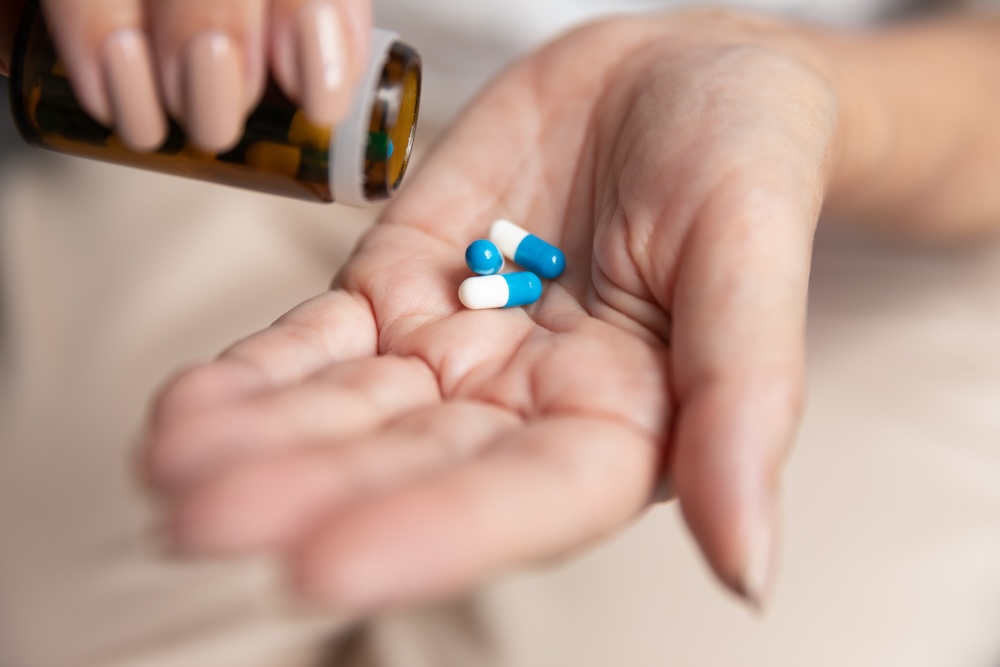Testosterone is an important part of hormone replacement therapy (HRT) for many people, providing particular relief for those experiencing low libido. If you’re already on HRT or considering it, you may be wondering if you can use it alongside other hormones? Exactly how does it fit in with the rest of your treatment? Read our expert guide to find out more.
Find what you need quickly
Testosterone and menopause
While often thought of as a ‘male’ hormone, testosterone is also produced in the female body. It has several important functions including in mood and sexual function.
Testosterone can be a useful addition to your HRT routine. It’s been proven to help those who struggle with low libido and other difficulties with sex. This is medically known as hypoactive sexual desire disorder or HSDD.
If you’re struggling with these symptoms, testosterone has been shown to improve:
- Satisfaction with sex
- Number of orgasms
- Sex drive
Sounds promising!
Is testosterone a kind of HRT?
Yes, testosterone can be thought of as a kind of HRT. Testosterone levels decrease with age and your ovaries begin to produce less of this hormone as you go through menopause. Taking testosterone replaces the hormone which is no longer produced by your own body, just like other forms of HRT.
HRT is more commonly used as a term when talking about treatment containing oestrogen and progesterone.
Testosterone for menopause is most commonly prescribed as a gel. Brand names include Tostran or Testogel. When prescribed as a cream, the only brand currently available is Androfeme. While these are proven and widely prescribed treatments, they are off-label. This means that they are being used for a reason or in a way not yet formally recognised in the licence. This might sound odd, but it’s accepted practice for doctors with the right experience to prescribe medications off-label in certain circumstances.
Testosterone can be prescribed by doctors with enough specialist knowledge of its use in menopause. While testosterone gels are available on the NHS, Androfeme testosterone cream is not. In fact, it is currently only available in Australia. This means that it needs to be imported under special licence and prescribed privately.
Our guide to different types of HRT for menopause. Learn more about testosterone.
Can you take other kinds of HRT with testosterone?
Yes, you can take other types of HRT with testosterone. It’s generally best to take testosterone alongside oestrogen, which is used in most HRT treatments.
Current guidance is to start testosterone only after a trial of oestrogen-containing systemic HRT. Systemic HRT comes in the form of oral tablets or transdermal patches, gels or sprays. With this kind of HRT, the hormones are distributed throughout your whole body.
This trial is recommended because oestrogen-containing HRT may improve your symptoms without needing to add testosterone. Oestrogen also has the benefit of working very well to treat most symptoms of menopause including hot flushes, mood swings and poor sleep.
It’s also important to think about vaginal and genital symptoms of menopause, such as tightness, dryness, itch, burning and painful sex. These symptoms happen because lowered levels of oestrogen affect vaginal tissues.
These changes can also have a huge impact on your sex life and libido. The good news is that they can be treated effectively with either systemic HRT or an extremely low-risk form of HRT known as vaginal HRT. This comes in the form of oestrogen creams, gels, pessaries and vaginal rings. The oestrogen is applied directly to your vagina and other affected areas. Treatment eases and even reverses the changes seen in menopause – vitally important if you’re also struggling with low libido.
Can you take testosterone without any other kind of HRT?
You can take testosterone on its own, although this is not generally recommended.
Taking testosterone alongside oestrogen has a number of benefits. Here’s what to consider:
- Oestrogen treats many different menopause symptoms, all of which can contribute to low libido and sexual difficulties
- Testosterone without oestrogen can lead to more side effects, including acne and excess hair
Since oestrogen is not suitable for everyone, using testosterone alone could be a reasonable choice in some circumstances. Speak to your doctor to find out what’s right for you.
Will taking testosterone affect your other HRT prescriptions?
Your doctor might recommend changes to your other HRT medications if you start testosterone, particularly if you take HRT tablets containing conjugated oestrogens, like Premarin. HRT taken orally can increase the sex hormone binding globulin (SHBG) which can bind to testosterone and prevent it from working. This can make your testosterone gel or cream less effective. Your doctor may recommend switching to transdermal HRT, which doesn’t cause the same problem.
Similarly, your doctor may suggest switching from oral to transdermal HRT – patches, pills or sprays – before trying testosterone. The theory is that moving away from HRT tablets reduces your SHBG and frees up the testosterone already in your system. Some women find that this simple switch is enough to help with their symptoms, avoiding the need for testosterone supplements.
Final word
Testosterone and other forms of HRT go hand-in-hand. Your doctor is likely to recommend a combination of both testosterone and oestrogen as part of your treatment.
But remember HRT is not suitable for everyone. Speak to your own doctor for advice on the best options available to you.
If you are interested in getting testosterone through our online menopause clinic, email hello@onstella.com. Read more about our testosterone service.
Read more about menopause on our blog or in our symptoms library.





